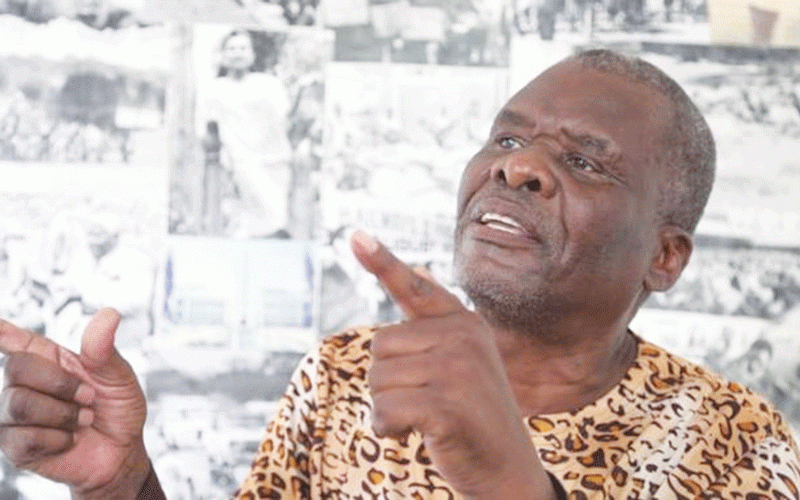
UNLIKE most artist couples in Zimbabwe, painters Amanda Mushate and her husband Tashinga Majiri do not thrive by emphasising contrast in their practices.
Instead of highlighting their differences, the young couple lean on each other with the charming naiveté of a youthful love. Both artists recently showed their work in a combined exhibition at First Floor Gallery Harare.
The exhibition title, Rudo Runowuya Nemabasa is an allusion to the biblical statement by Apostle Paul that says love without works is dead. A literal translation of the Shona title carries a double meaning love creates works, and love is manifested through works.

The title can also be a reference to the artworks in the exhibition as tangible evidence of the couple’s love. Despite the rosy sentiment suggested by the title, there is no doe-eyed fawning over each other in the paintings, but bold decisions made out of technical necessity determined by the subject and medium.
Mushate’s established style of meandering lines which go on forever in a hypnotic loop are familiar to her fans. Her style continues to engage in a surprisingly fresh manner.
The titles may help to bring a new perspective from each work, but overall, the reaction is ingrained and primordial.
Mushate’s Shona and Ndebele titles such as Takatakura (We are carrying/We are burdened) and Babuyile (They came/Are coming) may sometimes seem irrelevant to personal experience of the work such that they could all be named “untitled” and still maintain their powerfully sway.
Viewers familiar with Majiri’s past work will notice the obvious influence of his more established partner to his choice of colours. It could be a matter of common sense and necessity of budget, but Majiri’s adoption of Mushate’s colour palette rings loud and clear and can be seen as symbolic of their marital union.
In his work Majiri steers away from resemblance to his spouse by creating discontinuous lines that are antithetical to Mushate. While Mushate’s works are topographic landscapes with figurative shadows overlying them, Majiri’s images are like a profuse vegetation.
Mushate’s rich landscapes become the fertile ground in which Majiri’s ideas are seeded and flourish into verdant forests of blooming flowers and hanging fruit.
His work titles such as Zama, Kukura Kushinga, Small Issues and Who Feels it Knows it show a typical male psyche that is battling with social and economic issues. The dynamic at play provokes a healthy discussion on gender, masculinity, and patriarchy.

Criticism of Majiri’s new work may come from the notion of a male artist copying from their more skilled or talented partner. There are examples from the art historical canon of skewered partnerships leading to the male overshadowing the female.
Pablo Picasso is said to have overshadowed the talent of his partner Francois Guillot and Jackson Pollock that of his wife Lee Krasner.
Allowing his spouse to colour his world is not an act of dominance by Majiri, however, a rare and tender act of submission. Society is not kind when patriarchal norms are disrupted, such as when a woman earns more money than her husband, has a more successful career, or a more powerful position at work.
Majiri’s critics could be playing into the idea that men should always be the dominant partner, with better skills and more success than woman.
What may not be obvious to viewers is how in sync the couple is with their goals and desires. In separate interviews, the two responded that they first met when they enrolled at the National Gallery School of Visual Art in 2015 and hooked up after graduation at one of their lecturers’ funeral in 2019.
They couple admit to sharing similar tastes in music and fashion. Majiri feels that the strength of their relationship lies in the fact that Mushate understands what he does even if he comes back from the studio having spent all day staring at the canvas without lifting a hand.
“Amanda is this bundle of energy,” says Majiri, adding to what he found attractive in his future wife.
“We share a lot in common, we are more like friends and business partners,” says Mushate explaining her attraction to her husband.
The young couple is raising a little girl, Thandeka, their first child who they both dote on. “Having a baby has brought us together in a way that when we fight, we are fighting for the same thing”, said Mushate echoing her husband who said: “Everything became about her. We are both concerned with what is the best thing we can do for her.’’
At this stage it may be too early to predict how this experiment ends. Being a painter, poet, and certified Jindokai karateka who is not consumed by toxic masculinity sounds like a promising trajectory for Majiri.
As for Mushate, it remains to be seen if her all-consuming energy is not transmuted by her apparently submerged partner. The exhibition shows their works in giddy harmony, and the couple's continued evolution is something to look forward to.
Follow us on Twitter @NewsDayZimbabwe







